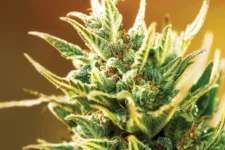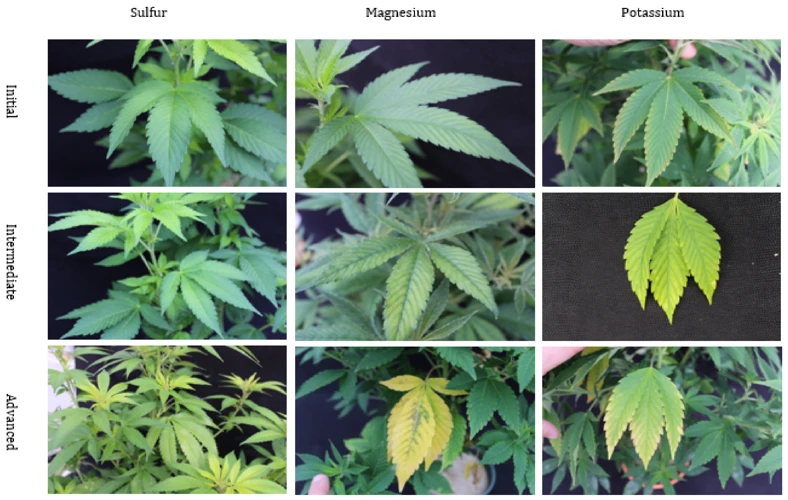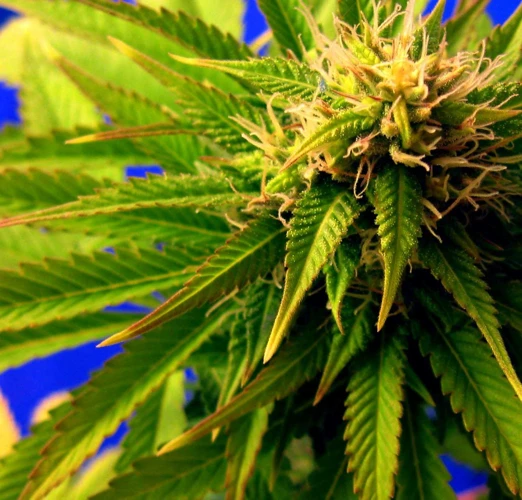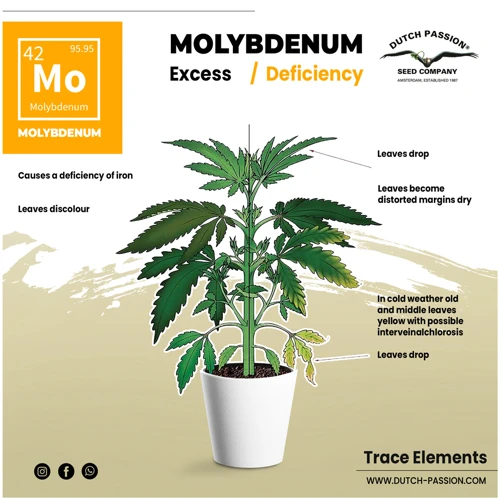
Understanding the Necessity of Molybdenum in Cannabis Growing
Introduction
Contents
The growth of healthy cannabis plants requires optimal nutrition. While many nutrients are essential for plant growth, molybdenum plays a crucial role in ensuring that a cannabis plant receives the proper nutrition it needs. Molybdenum is often overlooked by growers, yet it is a vital micronutrient necessary for the plant’s healthy development. In this article, we will explore the role of molybdenum in cannabis plant growth, the symptoms of deficiency, sources of molybdenum, and strategies to ensure that your cannabis plants have the right amount of this essential micronutrient.
The Importance of Molybdenum in Cannabis Nutrition
Molybdenum is an essential micronutrient required by cannabis plants in small amounts, but it plays a crucial role in various biochemical processes that are important for the growth and development of the plant. Molybdenum is a component of the enzyme nitrate reductase, which is responsible for the conversion of nitrates to ammonium in plants. This conversion is essential as nitrates are the primary source of nitrogen for the plant, and ammonium is the form in which the plant can absorb nitrogen. Without this conversion, the plant cannot utilize the nitrogen available in the soil, leading to stunted growth and poor health.
Moreover, molybdenum is also involved in the synthesis of several enzymes and proteins, including nitrogenase and sulfite oxidase, which help in nitrogen fixation and sulfur metabolism in plants, respectively. Nitrogen fixation is the process by which nitrogen from the atmosphere is converted into ammonia, which is then utilized by plants to synthesize amino acids, nucleic acids, and chlorophyll. Sulfite oxidase, on the other hand, is responsible for the detoxification of sulfites, which are toxic byproducts of various metabolic processes.
In addition to its role in nitrogen fixation and sulfur metabolism, molybdenum also plays a vital role in the plant’s defense mechanism against various pathogens and diseases. It is involved in the production of phytoalexins, which are compounds that help in protecting the plant from various biotic stresses. The absence of molybdenum in the plant can lead to increased susceptibility to diseases and infections.
Given its crucial role in various biochemical processes, it is essential to maintain proper levels of molybdenum in cannabis plants. However, because it is required in relatively small amounts, excess molybdenum can be harmful to the plant, leading to toxicity symptoms. It is necessary to provide the right amount of molybdenum to the plant and avoid over-fertilization.
Proper molybdenum levels are also crucial for the uptake and utilization of other essential nutrients, such as iron and boron. Iron is required for the synthesis of chlorophyll, and boron is essential for the growth and development of cannabis plants. Maintaining the correct balance of nutrients is necessary for optimal plant growth and health.
Molybdenum Deficiency Symptoms in Cannabis Plants
When it comes to growing cannabis, it’s important to pay attention to the nutrients your plants are receiving. One nutrient that is essential to the healthy growth of cannabis plants is molybdenum. Without proper levels of molybdenum, your plants can suffer from a variety of deficiency symptoms. These symptoms can negatively impact your yield and the overall health of your plants, making it crucial to identify and address any issues with molybdenum early on. Let’s take a closer look at some of the most common symptoms of molybdenum deficiency in cannabis plants. And if you’re interested in learning about another important nutrient for cannabis plants, check out our article on the benefits of boron.
Yellowing Leaves
Yellowing leaves are one of the most noticeable signs of a molybdenum deficiency in cannabis plants. This is due to the fact that molybdenum is essential for the uptake and distribution of nitrogen in the plant. Nitrogen is a key component of chlorophyll, which is responsible for the green color of leaves. Without enough molybdenum, the plant cannot properly absorb and distribute nitrogen, resulting in a yellowing of the leaves.
If you notice yellowing leaves in your cannabis plant, it is important to address the issue quickly to prevent further damage. Here are some steps you can take to correct a molybdenum deficiency:
1. Check Your pH Levels: Molybdenum deficiencies are often caused by imbalanced pH levels in the soil. Cannabis plants prefer a slightly acidic soil pH of around 6.0-6.5. If your pH levels are off, add lime to raise the pH or sulfur to lower it.
2. Add Molybdenum Supplements: If your soil has low molybdenum levels, you can add a molybdenum supplement to address the deficiency. These supplements are available in both liquid and powdered forms and are designed to be added to your plant’s watering schedule.
3. Adjust Your Fertilizer: If you are using a fertilizer that is high in nitrogen but low in molybdenum, your plants may not be getting enough of this essential nutrient. Look for fertilizers that have a balanced ratio of nitrogen and molybdenum to ensure optimal plant health.
4. Reevaluate Your Watering Schedule: Overwatering or underwatering your cannabis plants can also lead to nutrient deficiencies. Make sure you are watering your plants regularly and only when the soil is dry to the touch.
By taking these steps, you can address a molybdenum deficiency in your cannabis plants and promote healthy plant growth.
Slow Growth
One of the most notable symptoms of a molybdenum deficiency in cannabis is slow growth. This can be caused by the role molybdenum plays in the production of enzymes that are essential for a plant’s metabolic processes. Without sufficient molybdenum, these enzymes cannot function properly, leading to slow or stunted growth.
Other factors can also contribute to slow growth in cannabis plants, such as insufficient light, poor soil quality, or overwatering. However, it is important to consider molybdenum levels as a potential root cause, especially if other symptoms of deficiency are present.
If you notice your cannabis plants are exhibiting slow growth, consider checking their molybdenum levels and taking action to increase them if necessary. This can be done through the use of molybdenum supplements, adding compost or other soil amendments rich in molybdenum, or selecting a growing medium that naturally contains high levels of the nutrient.
Addressing molybdenum deficiency and promoting healthy growth in cannabis plants can lead to higher yields and more robust plants.
Abnormal Leaf Morphology
Abnormal leaf morphology in cannabis plants is another sign of molybdenum deficiency. These abnormalities can take various forms such as curled leaves, fan leaves that are twisted or cupped, and leaves that are elongated or distorted. In severe cases, the leaves may become brittle and start to crumble.
Abnormal Leaf Morphology as an Indicator of Molybdenum Deficiency
Leaf Symptoms of Molybdenum Deficiency
| Leaf symptom | Description |
|---|---|
| Curled leaves | The margins of the leaves curl inward, and the leaves appear to be twisting. |
| Twisted fan leaves | The fan leaves at the top of the plant twist or curl up instead of laying flat. |
| Cupped fan leaves | The fan leaves appear to be cupped or curled upwards. |
| Enlarged, distorted leaves | The leaves become elongated or distorted in strange ways. In some cases, they may even appear to be blistered. |
When molybdenum is lacking, enzymes responsible for nitrogen fixation in cannabis plants become less active, causing the abnormal growth patterns. These enzymes facilitate nitrogen metabolism, and a shortage of molybdenum leads to stunted growth and abnormal development, including leaf morphology abnormalities.
It’s essential to correct molybdenum deficiency as soon as possible to prevent further damage to the plant. Adding molybdenum supplements or finding a suitable iron chelate that contains molybdenum is the best way to address the issue. Additionally, composting and soil amendments can help restore nutrient balances and ensure that your cannabis plants receive adequate amounts of molybdenum. Choosing the right growing medium also plays a crucial role in achieving optimal growth and robust cannabis plants.
Sources of Molybdenum for Cannabis
When it comes to ensuring proper nutrition for cannabis plants, it’s important to consider all of the essential nutrients needed for optimal growth and development. One crucial element is molybdenum, which plays a vital role in plant metabolism and enzyme activity. In order to provide your cannabis plants with sufficient amounts of molybdenum, it’s important to understand the various sources available. Let’s take a closer look at some of the options for obtaining this essential element.
Molybdenum Supplements
One way to ensure that your cannabis plants have proper molybdenum levels is by using molybdenum supplements to supplement their nutrient intake. Molybdenum supplements can come in various forms, including liquids, powders, and chelated forms.
Liquid molybdenum supplements can be added directly to your plant’s watering solution, while powdered supplements can be mixed into the soil or growing medium during the early stages of plant growth. Chelated molybdenum supplements, on the other hand, are generally considered the most effective, as they contain molybdenum that has been bonded to an organic molecule, making it more readily available for plant uptake.
It’s important to follow the manufacturer’s instructions when using molybdenum supplements, as over-applying can lead to toxicity and other nutrient imbalances. Combining molybdenum supplements with other micronutrients, such as iron and zinc, can help ensure that your plants are getting all the nutrients they need for optimal growth.
While molybdenum supplements can be an effective way to boost your plant’s molybdenum levels, it’s important to remember that supplements should never be used as a substitute for a balanced, nutrient-rich growing medium. Always make sure your plants have access to a variety of essential micronutrients, including molybdenum, through a well-balanced growing medium and proper plant care.
Natural Sources of Molybdenum
Molybdenum is essential for the growth and development of cannabis plants. While supplements can be used to provide the necessary amount of molybdenum, there are also natural sources of this mineral that can be used.
Foods high in molybdenum:
| Food | Molybdenum content (mcg/100g) |
|---|---|
| Lentils | 177 |
| Split peas | 148 |
| Beans (black, navy, kidney) | 132-137 |
| Chickpeas | 105 |
| Brown rice | 96 |
| Tuna fish | 59 |
| Beef liver | 57 |
These foods can be added to the diet of cannabis plants in order to provide an additional source of molybdenum. However, it is important to note that the levels of molybdenum in these foods may not be enough to meet the needs of a cannabis plant.
Soil sources of molybdenum:
Molybdenum is naturally present in soil in varying amounts, depending on the region. In general, soils that have a high organic matter content and are well-drained tend to have higher levels of molybdenum. Some sources of molybdenum in soil include:
– Rock phosphate
– Compost
– Manure
– Greensand
These sources of molybdenum can be added to soil in order to increase the amount of available molybdenum for cannabis plants. However, it is important to test the soil before adding any supplements, as too much molybdenum can be toxic to plants.
Water sources of molybdenum:
Molybdenum can also be present in water sources, although the levels are usually very low. In areas where the water is naturally high in molybdenum, cannabis plants may have sufficient levels without the need for supplementation.
While there are natural sources of molybdenum that can be used to supplement the diet of cannabis plants, it is important to monitor the levels and ensure that they are not toxic to the plants. Supplementation with a reliable molybdenum supplement may be the most practical solution for maintaining adequate levels in cannabis plants.
How to Ensure Proper Molybdenum Levels in Your Cannabis Plant
As we now understand the crucial role of molybdenum in cannabis nutrition and the signs of molybdenum deficiency, it’s essential to ensure that your cannabis plant is receiving adequate levels of this vital micronutrient. In this section, we will explore different methods to maintain proper molybdenum levels in your cannabis plant, including the use of molybdenum supplements, natural sources of molybdenum, and choosing the right growing medium. By implementing these strategies, you can ensure your cannabis plant’s optimum growth and health.
Using Molybdenum Supplements
Supplementing with molybdenum can be an effective way to ensure your cannabis plants receive the appropriate levels of this essential micronutrient. There are a variety of molybdenum supplements available on the market, including liquid and powder forms. Liquid supplements can be added directly to your plant’s water supply, while powders can be mixed into your growing medium or applied directly to the soil around your plants.
It is important to follow the manufacturer’s instructions carefully when using molybdenum supplements, as over-supplementation can lead to toxicity and other adverse effects. It is recommended to start with a small amount and gradually increase as needed while monitoring your plants for any signs of stress or nutrient imbalances.
One popular type of molybdenum supplement is sodium molybdate, which is a highly water-soluble form of molybdenum. This supplement can be added to your plant’s water supply or nutrient solution, and is readily absorbed through the roots. Other types of molybdenum supplements may include chelated forms, which can be more stable in certain pH ranges and may be preferable for some growers.
In addition to supplementing with molybdenum directly, you may also consider using a complete nutrient solution that includes all essential micronutrients, including molybdenum. These types of nutrient solutions can help ensure that your plants receive all of the micronutrients they require, while also simplifying the nutrient management process.
Overall, using molybdenum supplements can be an effective way to address deficiencies and ensure proper nutrient levels in your cannabis plants. However, it is important to approach supplementation carefully and monitor your plants for any signs of nutrient imbalances or toxicity.
| Pros | Cons |
|---|---|
| Molybdenum supplements can be easily added to your plant’s water or growing medium | Over-supplementation can lead to toxicity |
| Highly water-soluble forms of molybdenum, such as sodium molybdate, can be readily absorbed by plants | May be more expensive than natural sources of molybdenum |
| Can help address deficiencies and ensure proper nutrient levels in your plants | Must follow manufacturer’s instructions carefully, as improper use can lead to negative effects on plant health |
Composting and Soil Amendments
Composting is an effective way to provide organic matter and increase the levels of essential nutrients in the soil, including molybdenum, for your cannabis plants. By composting your organic waste, you create a natural fertilizer that can improve soil fertility and enhance plant growth.
To start composting, gather organic materials such as leaves, kitchen scraps, grass clippings, and yard waste. Layer these materials in a compost bin or pile, adding water and turning the pile regularly to provide air circulation. As the organic matter decomposes, it releases nutrients into the soil, including molybdenum.
Another way to add molybdenum to your soil is through the use of soil amendments. These are materials added to the soil to improve its physical properties, such as structure, aeration, and water-holding capacity. Some examples of soil amendments that contain molybdenum include rock phosphate, bone meal, and alfalfa meal.
Rock phosphate is a natural mineral that is high in phosphorus and also contains small amounts of molybdenum. To use rock phosphate as a soil amendment, mix it into the soil at a rate of about 1 to 2 pounds per 100 square feet of garden bed.
Bone meal is another soil amendment that contains molybdenum, as well as other essential macronutrients like calcium and phosphorus. It is made by grinding up animal bones and can be applied to the soil at a rate of about 10 pounds per 100 square feet of garden bed.
Finally, alfalfa meal is a popular soil amendment that is high in nitrogen, as well as molybdenum and other micronutrients. To use alfalfa meal as a soil amendment, apply it to the soil at a rate of about 5 pounds per 100 square feet of garden bed.
By using composting and soil amendments, you can ensure that your cannabis plants have access to the essential nutrients they need to thrive, including molybdenum. By maintaining proper molybdenum levels in your plants, you can prevent deficiencies, support healthy growth, and ultimately, improve your yield.
Choosing the Right Growing Medium
One important aspect to consider when growing cannabis is selecting the right growing medium, as it can directly impact the availability of essential nutrients, including molybdenum.
Soil: Soil is a common choice for growing cannabis plants, as it contains natural nutrients and minerals necessary for plant growth. When choosing soil, it’s important to consider the pH balance and nutrient levels. Adding compost or other organic matter to the soil can also improve its overall quality.
Coco Coir: Coco coir, also known as coconut fiber, is a growing medium made from the husks of coconuts. It is an increasingly popular choice for cannabis growers, as it is highly absorbent and allows for excellent aeration. It also has a neutral pH balance, which makes it easy to adjust.
Rockwool: Rockwool, made from volcanic rock or basalt, is a popular hydroponic growing medium. It provides excellent water retention and air circulation, making it ideal for growing cannabis. However, it is important to note that rockwool can be difficult to dispose of, as it does not decompose easily.
Hydroponics: Hydroponics is a soil-free growing method that involves growing plants in nutrient-rich water. It is an efficient and controlled method of growing cannabis as it allows for precise control of nutrient levels. However, it can be more expensive and requires a higher level of expertise.
Choosing the right growing medium for cannabis cultivation is crucial for ensuring proper molybdenum levels and overall plant health. Conducting research and selecting a growing medium based on the specific needs and expertise of the grower can lead to a successful cannabis crop.
| Growing Medium | Pros | Cons |
|---|---|---|
| Soil | Contains natural nutrients, Organic matter can be added to improve quality | pH balance may not be ideal, can be prone to pests and disease |
| Coco Coir | Highly absorbent, allows for excellent aeration, neutral pH balance | May require more frequent watering and nutrient monitoring |
| Rockwool | Provides excellent water retention and air circulation, ideal for hydroponics | Difficult to dispose of, may require additional washing and preparation before use |
| Hydroponics | Precise control of nutrient levels, efficient and controlled method of growing | More expensive, requires a higher level of expertise |
Conclusion
In conclusion, molybdenum is an essential micronutrient for cannabis plants, playing a crucial role in their growth and development. It helps in the formation of enzymes that aid in nitrogen fixation and nutrient absorption, making it a vital component in the overall health of the plant.
As discussed earlier, the symptoms of molybdenum deficiency can greatly impact the growth and quality of the plant. The yellowing of leaves, slow growth, and abnormal leaf morphology are all indications of insufficient molybdenum levels.
To ensure proper molybdenum levels in your cannabis plants, there are several options available. Molybdenum supplements can be added to the soil or hydroponic nutrient solution as a quick and easy fix. Natural sources such as leafy greens and legumes can also provide a source of molybdenum for your plants.
Composting and soil amendments can also be used to increase molybdenum levels in the soil. Adding compost and other organic matter can help to create a healthy soil ecosystem and promote nutrient absorption by the plants.
Finally, choosing the right growing medium can also have a significant impact on molybdenum levels in your plants. Soils that are well-draining and rich in organic matter tend to have higher levels of molybdenum, while hydroponic systems may require additional supplementation.
Ultimately, providing adequate molybdenum levels for your cannabis plants is critical for maximizing growth and yield. By understanding the importance of molybdenum and taking steps to ensure proper levels, you can help your plants thrive and produce high-quality, potent buds.
Frequently Asked Questions
What is molybdenum and why is it important for cannabis nutrition?
Molybdenum is a trace mineral that is essential for cannabis plant growth and development. It is particularly important for the plant’s ability to use nitrogen efficiently.
What are the symptoms of molybdenum deficiency in cannabis plants?
Yellowing leaves, slow growth, and abnormal leaf morphology are all common symptoms of molybdenum deficiency in cannabis plants.
Can molybdenum deficiency be mistaken for other nutrient deficiencies?
Yes, molybdenum deficiency can often be mistaken for deficiencies in other nutrients such as nitrogen, iron, or sulfur.
What types of molybdenum supplements are available for cannabis plants?
There are several types of molybdenum supplements available, including chelated molybdenum, molybdenum oxide, and molybdenum sodium.
Can cannabis plants absorb molybdenum through their leaves?
Yes, cannabis plants can absorb molybdenum through their leaves, but it is most effective when applied directly to the root zone.
Can molybdenum toxicity occur in cannabis plants?
While rare, molybdenum toxicity can occur in cannabis plants. Symptoms include leaf curling, stunted growth, and brown spots on the leaves.
Is it possible to have too much molybdenum in the growing medium?
Yes, too much molybdenum in the growing medium can lead to toxicity in cannabis plants. It is important to monitor levels and only add supplements when necessary.
What are some natural sources of molybdenum for cannabis plants?
Natural sources of molybdenum include compost, kelp meal, and rock phosphate.
Is it necessary to adjust pH levels when using molybdenum supplements?
No, molybdenum supplements do not typically require adjustments to pH levels.
Can molybdenum deficiency affect the potency of cannabis?
While molybdenum deficiency can impact the overall health and yield of cannabis plants, it is not typically associated with a decrease in potency.





